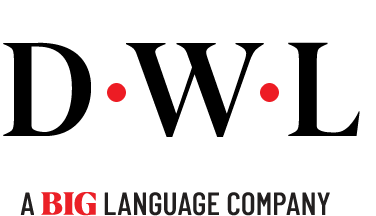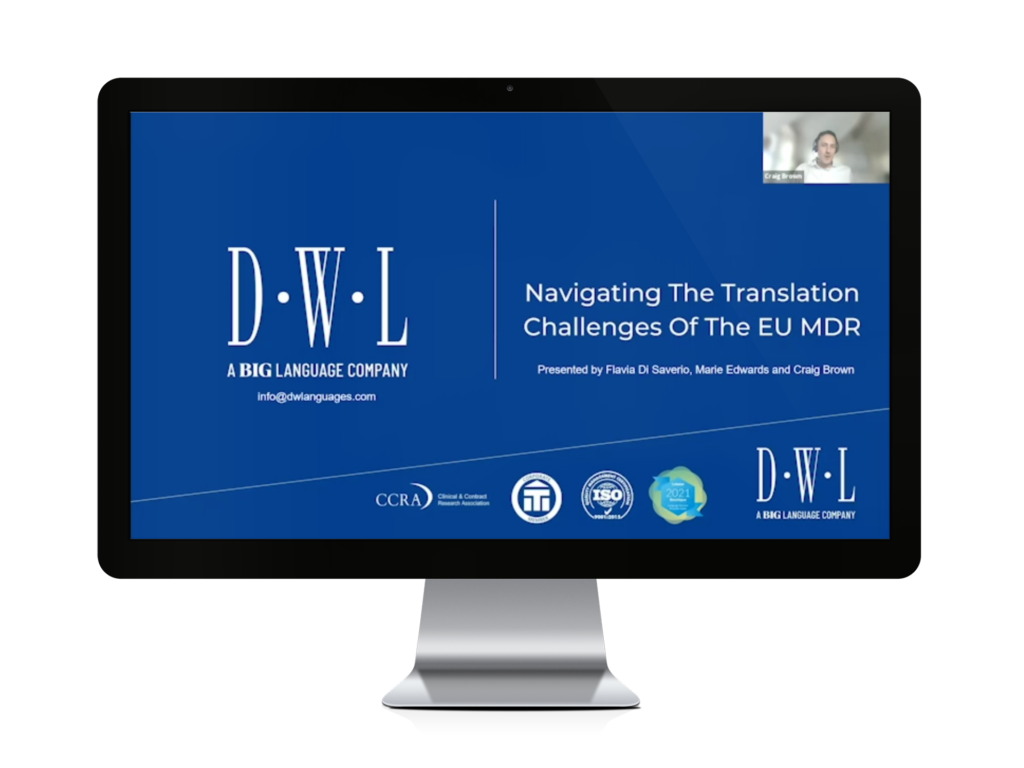Effective communication shouldn’t be a struggle, especially in high-stakes settings like government, healthcare, and education. However, getting essential information on phone calls can be challenging for the many people who speak English as a second language. Ideally, the over-the-phone interpretation (OPI) experience should be smooth and efficient for your customers, just like calling in as a native English speaker. And that depends entirely on the long-term capabilities of your OPI outsourcing partner.
Part of your vendor management process should be to review the performance of your current provider every 2-3 years to make sure they are still meeting your needs. If the OPI services you’re offering to callers fall short of your goals, it may be that your vendor’s program isn’t equipped to meet your needs.
Here’s how to evaluate your service and determine if it’s time to make a change.
How to Know When You Need to Switch OPI Interpretation Vendors
Here are some challenges you may be facing with your current interpretation service. If you can tick two or more of these boxes, then it may be time to consider switching vendors.
- Long wait times or a difficult connection process. Connecting to an interpreter shouldn’t mean navigating through a complex phone tree or leaving your callers stuck on hold for minutes.
- Inconsistent availability. Not having 24/7 access to interpreters means callers may have to call back, increasing their frustration and wreaking havoc on your one-call resolution (OCR) statistics.
- Lack of specialization. Interpreters and linguists with generic skills may not understand relevant industry terminology or situations, leading to ineffective communication with your customers and community members.
- Poor quality assurance. Every minute you have to spend dealing with errors, inconsistencies, or repeat calls that weren’t handled properly the first time, is time you could be spending helping your customers.
- Unresponsive customer support. If you have a problem with your interpreting service, you need to be able to get it fixed, quickly.
- Limited language options. Low language availability can leave you unable to serve all your customers or community members effectively.
- Compliance issues. If your interpretation vendor is not compliant with industry regulations and standards, your organization faces significant legal and operational risks. The consequences for compliance missteps can be severe: fines, data breaches, reputational damage, and potential legal action.
- Lack of innovation. If your vendor isn’t investigating new technology or seeking constant improvements, then you may be missing out on improved efficiency or more cost-effective pricing.
If these problems sound familiar, it may be time to explore a new provider. But with so many solutions on the market, which interpretation vendor should you choose?
Here are seven key reasons to partner with BIG Language Solutions.
1. Greater access to resources
When it comes to choosing an interpretation vendor who can cover your fluctuating call volumes and large language sets, size matters. Ask the vendor how large their team is, the number of languages they cover, and how they schedule their interpreters to cover the relevant languages 24/7/365 and provide consistent, reliable, and fast service every time.
You may be surprised by what they reply. Many interpretation companies do not have a single interpreter on staff but instead subcontract interpretation to different vendors worldwide. That means they may not be in complete control of hiring, vetting, or scheduling those interpreters.
At BIG Language Solutions, we don’t subcontract out to other organizations. Instead, we collaborate with interpreters directly, sourcing, vetting, and managing over 2,000 linguists in the U.S. and around the world to offer an optimal experience for you and your customers.
As a result, we’re able to provide high-quality OPI in more than 300 languages and dialects 24/7. We also have a dedicated department for scheduling, forecasting, and overseeing interpreter availability so our customers can always get the support they need.
2. Availability of other related services
Most businesses need more than just interpretation services. Consolidating vendors is more efficient and often more budget-friendly, as well. BIG can provide access to a comprehensive range of specialist translation and localization services, including:
- Websites
- Documents
- Handbooks
- Guidelines
- FAQs
- How-to’s, and more
We also handle large print and Braille.
As a result, the service you receive from us covers the big picture. We’ll make sure you remain compliant and provide improved language access to your consumers—and it’s provided through a single point of contact.
3. Industry-specialized interpreters
Each industry has its own quirks, operates under its own set of regulations, and has a specific vocabulary. That’s why industry-specific expertise is vital to delivering high-quality and reliable interpretation services. Generalists don’t cut it: interpreters must understand your industry if they are to deliver the high-quality and reliable interpretation services you and your customers deserve.
Do not assume your current interpretation provider has a sizable enough team to provide this expertise consistently. Ask them how many minutes per month of call volume they handle for your specific industry and how many companies in your sector they support.
Your chosen vendor should handle at least 500,000 minutes a month and support at least 500 business customers, many of which should be in a similar industry as you. Otherwise, they are unlikely to have enough interpreters with the right experience for your needs. Your ideal interpreting vendor should also have a process for matching calls with the right interpreter quickly.
BIG’s network of highly trained interpreters, project managers, and quality control professionals provides services across various industries, including government, healthcare, education, financial services, and legal. Our specialists are rigorously vetted and skilled in their fields, so every call gets prompt access to top-tier interpreters. With skills-based routing, we quickly match calls with the best interpreters for the job.
Also, even in the age of AI, our interpreting talent is always human. We do use AI to make our quality assurance processes more efficient, but the conversations and QA are handled by a human with training and a background in your industry. Make sure you understand your vendor’s use of AI in the interpretation service they provide.
4. Outstanding connect times
Long connection times mean a bad user experience. In fact, according to Zendesk, almost 60% of customers identified long holds and wait times as “the most frustrating part of a bad customer service experience.” Also, when a conversion is critical in nature, long connection times simply aren’t ok.
To keep connection times brief, verify that the language company you work with has interpreters in place and ready plus a workforce management team to track and forecast demand.
Ask what connection times they offer, or guarantee, to speak to an interpreter.
Connection times should be about 20 seconds on average for Spanish and between 20-30 seconds on average for all other languages. We average a 20-second connect time for all languages, so you can trust every call will be answered promptly by an appropriate interpreter.
Our telephony infrastructure boasts 99.999% uptime – nobody’s perfect, but we’re pretty close.
We also offer a variety of ways to connect with an interpreter, whether it’s by integrating with your systems, your switch talking to ours, or just picking up the phone. Choose the deployment method that best fits your needs and your workflow.
In addition, our workforce management team oversees demand and adjusts schedules to guarantee coverage and faster connection times, even if you need support for less common languages.
5. Competitive pricing that reflects your needs
Budgets are tight and there is always a mandate to do more with less.
Your interpretation service provider should be proactive in offering you ways to save money. Look for services that bill by the minute, and make sure that you’re not paying for time spent waiting to connect with an interpreter. Make sure they also provide you with access to a secure customer portal so you can track and keep on top of incoming demand and outgoing spending.
As mentioned above, bundling different types of language services into one package deal is another way that interpretation providers can help you save money. When bundling services, your provider may also be able to help with translating scripts for multilingual interactive voice responses (IVRs), and these can lower your costs overall by enabling customers to help themselves.
Some providers may also offer volume discounts and flexible pricing models, so you can pay a different, lower, per-minute rate for calls that don’t require a specialist interpreter.
Also, beware of hidden costs. Some providers charge for portal access, customized reports, training on how to use the service, and third-party calls. All of this is covered within our pricing models.
BIG is here to help you make the most of your interpretation budget with easy-to-understand per-minute pricing, billing that starts only after you have an interpreter on the line, and customized packages designed to get you the services you need in a cost-effective way.
6. Quality assurance and security rigor
To guarantee that your non-English speaking customers get the best possible service, you need an interpreting vendor that is serious and proactive about quality assurance. At BIG, we use a comprehensive QA process to make sure your experience is always top-notch.
Our process includes 10 checkpoints at different steps of the process, from call initiation to billing, guaranteeing every aspect of your service meets high standards. This approach goes beyond interpretation quality to encompass customer service, accuracy, and efficiency. By continuously monitoring and evaluating our processes, we maintain consistent and exceptional service delivery.
For interpreting, we use artificial intelligence (AI) to monitor calls and flag them for further analysis by one of our human QA specialists. This allows us to monitor more calls and catch issues more quickly. This is an optional feature—if you don’t want your calls recorded, we can turn it off.
Also, our processes comply with ISO standards for quality management and assurance practices, including ISO 9001, ISO 17100, and ISO 27001. We prioritize end-to-end security protocols and best practices in our systems to protect your sensitive and confidential information from cybersecurity threats.
7. Responsiveness and customer service
What if something doesn’t go as planned, either during a call or with other aspects of your interpreting service? Delays or unresolved issues can disrupt your operations, cause frustration, and potentially lead to lost business or client dissatisfaction.
At BIG, we prioritize responsiveness and customer service to make sure your needs are met promptly. If you need help during a call, we’ve got your back. Our customer support team has live operators available 24 hours a day, seven days a week, 365 days a year to answer questions, handle feedback, help you identify the required language, or connect you with an interpreter.
Likewise, our client relations team is always keen to hear from you. We will respond to you within 24 hours.
8. Easy setup and supportive account management
Working with an interpretation vendor shouldn’t be difficult. Onboarding shouldn’t be lengthy and painful. And with BIG, it’s not.
With our easy account setup – usually within 24 hours – you can quickly and conveniently access multilingual support via a dedicated phone number and unique access code.
In addition, we provide a real-time, secure, and easy-to-use portal to manage and oversee calls, reports, and invoicing information. Our portal offers easy access to all of the data you need for reporting, compliance, and funding questions. We offer metrics for every call, not just consolidated summaries of all calls, so you know exactly where each number is coming from.
How we make switching easy
Upgrading your interpretation vendor is as easy as picking up the phone. Just set up a call with one of our account managers. They will listen to your requirements and determine the best solution to meet your needs. We understand that no business is the same, so we offer customized account setup and solutions.
Getting started is easy:
- Provide us with your estimated monthly minutes
- Provide your list of top languages
- Meet with your account manager to determine set-up requirements
- Sign standard services agreement
- Set up a free test call to make sure everything is set up the way you need before going live
As soon as we’ve got that agreement in place, we’ll help you set up your account, portal, and everything else you need for your first call. In just 24 hours, you’ll be ready to go!
Contact us today to talk about how a switch to BIG Language Solutions can help you save money and provide your customers and constituents with a better experience.






